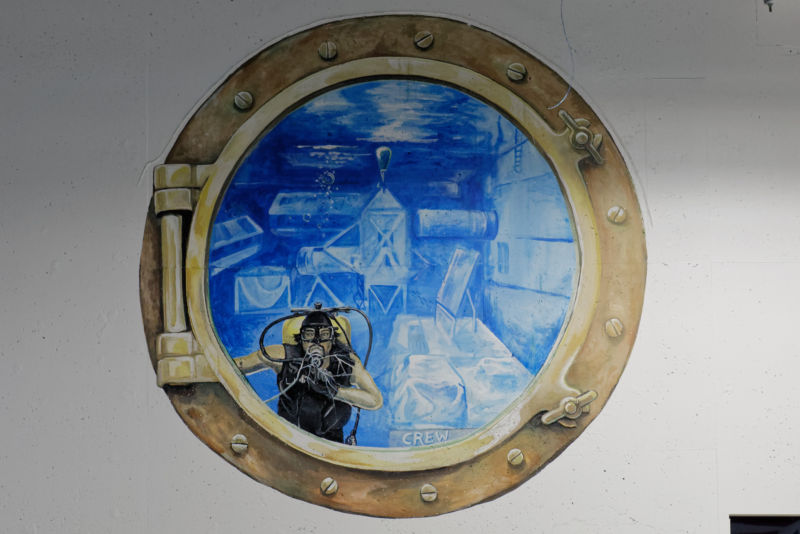Why is NASA renting out its huge astronaut pool? To keep the lights turned on
Ars Technica » Scientific Method 2017-02-09

Enlarge / Neat painted mural on one of the pool bulkheads at the Neutral Buoyancy Lab. (credit: Lee Hutchinson)
On a recent February afternoon, I strolled up to a fat, brightly painted yellow line and peered down into a clear, seemingly bottomless pool. Like the mythical sirens of the Homeric Age, the water called to me. As if he read my mind, Kurt Otten hurriedly called out to me. “Please don’t jump in, because this would be the last day on my job."
Fortunately for the facility manager, I didn’t. But it was hard not to be tempted by the beautiful, blue depths before me. Hotels, health clubs, and other facilities often brag about possessing an Olympic-size swimming pool. That’s cute. At 202 feet in length, a depth of 40 feet, and a total of 6.2 million gallons, about ten Olympic swimming pools would fit into the NASA’s Neutral Buoyancy Lab, or NBL.
There’s one very good reason why the pool was built so big—it had to accommodate segments of the International Space Station during assembly. Before astronauts flew to the station aboard the shuttle, crews would spend exhausting “runs” inside the pool, wearing a combination of weights and flotation devices to simulate the weightlessness of orbit. Then they would practice whatever aspects of station construction there were to do in space.